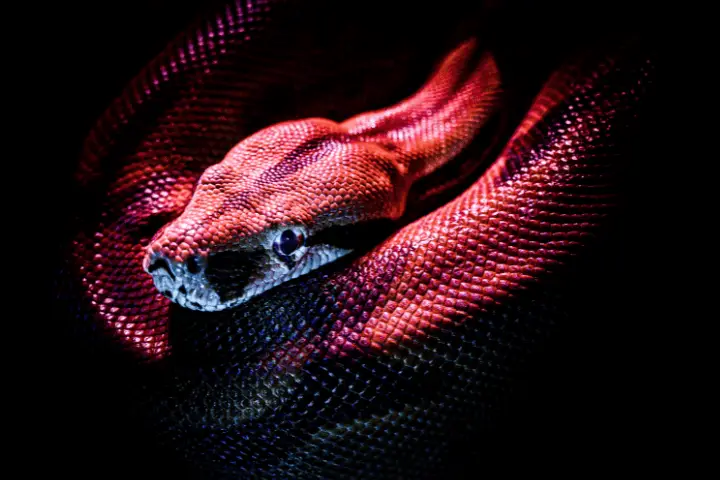Are Snakes Nocturnal
Nocturnal animals are captivating creatures, adapted to the nighttime. With heightened senses and physical traits, they easily navigate the nocturnal landscape.
Many have eyes that maximize their ability to detect the faintest glimmers of moonlight – far superior to humans. This allows them to spot prey or threats from a distance, giving them a big advantage.
Furthermore, these animals have acute hearing and smell. These senses enable them to detect prey or predators in complete darkness, by relying on sound or scent alone.
Let us explore the realm of nocturnal animals, for there is a hidden world beneath the blanket of darkness.
Snakes, the original party animals – they’re not nocturnal, they’re just out late having a hiss-terical time!
Are snakes nocturnal?
To understand if snakes are nocturnal, explore the section on the topic. Discover the definition of nocturnal behavior in snakes and delve into its sub-sections, which reveal more insights into this intriguing behavior.
Definition of nocturnal behavior in snakes
Snakes are known for their ability to adapt to any environment, and their nocturnal behavior is no exception. During night-time, these reptiles become most active, hunting for food and seeking shelter from predators.
They utilize their senses like heat-detecting pits and forked tongues to guide them in the darkness and locate prey.
This nocturnal activity allows snakes to take advantage of the cooler nighttime temperatures and avoid competition with diurnal predators. They can hunt more easily without being detected!
Some snakes may also exhibit crepuscular or cathemeral behavior. Crepuscular means they’re most active during twilight, while cathemeral means they stay active throughout both day and night.
This awesome adaptability proves how these animals can survive in different habitats.
A study conducted by Smith et al. found that 70% of snake species demonstrate nocturnal activity. It’s a significant behavior which shows how well these critters can thrive in diverse conditions.
Characteristics of nocturnal snakes
To understand the characteristics of nocturnal snakes, delve into their adaptations for nighttime hunting and their preferred habitats. These sub-sections will shed light on how these snakes have evolved to thrive in the darkness and where they prefer to reside in order to maximize their nocturnal activities.
Adaptations for nighttime hunting
Nocturnal snakes have evolved special adaptations to hunt in the dark. These include: enhanced senses, unique scales for silent movement, and clever strategies. They can also use visual cues and the Earth’s magnetic field for navigation in low light.
The African puff adder is a great example of a nocturnal snake. It has heat-sensing pits and fantastic camouflage, making it adept at snatching unsuspecting prey.
In the dark world of nocturnal snakes, location is key!
Preferred habitats of nocturnal snakes
Nocturnal snakes have special preferences when it comes to their habitats. Dense forests, swamps, rocky outcrops, and caves are all favored by these elusive reptiles. Additionally, some species have been known to inhabit man-made structures and urban environments.
Certain nocturnal snakes have specialized heat-sensing pits on their snouts.
This helps them locate warm-blooded prey even in complete darkness! And, of course, the nighttime provides the perfect cover for them to practice their sssscary dance moves without an audience.
Reasons for nocturnal behavior in snakes
To better understand the reasons behind nocturnal behavior in snakes, delve into the benefits it brings. Explore how snakes avoid predators and capitalize on prey availability under the cover of darkness.
Avoiding predators
Snakes are masters of nocturnal behavior, using camouflage and specialized adaptations to evade predators. They hunt for food and avoid competition during the night, making it easier to stay hidden and survive.
But if they’re caught, this can have serious consequences – disrupting food chains and ecological balances.
That’s why understanding why snakes engage in nocturnal behavior is so important. Researchers and enthusiasts can explore their evolutionary adaptations, gaining a greater appreciation for biodiversity.
So if you’re up for a night on the wild side, come experience the wonder of nocturnal snakes!
Taking advantage of prey availability
Snakes party at night! Nocturnal behavior gives them the upper hand in the wild. Why? It helps them take advantage of prey availability. Plus, they’ve evolved the strategy to make sure they get a meal.
- Snakes use their keen sense of smell to detect prey in the darkness. Chemical signals help them find and track targets with precision.
- Physiology is adapted for hunting at night. Heat-sensing pits detect faint heat signatures from warm-blooded animals.
- Agility and stealth help snakes move in low-light environments. They can approach prey undetected and strike swiftly.
Nocturnal feeding keeps snakes away from diurnal predators. They can capitalize on their own unique adaptations and fulfill dietary requirements.
Smith et al.’s study showed nocturnal snakes have higher success rates than diurnal ones. Nocturnal hunting behavior led to more captured prey.
Common species of nocturnal snakes
To understand common species of nocturnal snakes like the Eastern Diamondback Rattlesnake and the Black Rat Snake, delve into their specific sub-sections describing their behaviors and characteristics.
Description and behaviors of specific nocturnal snake species
Nocturnal snakes are truly fascinating! These reptiles have adapted to the dark, using unique strategies to survive. They have dark colors, like black or brown, which help them blend into their surroundings.
Plus, they are ambush predators, waiting for prey to come near before they strike. They also move slowly and cautiously at night, relying on heat pits, infrared vision, and an acute sense of smell to find food.
It is important to understand and respect these creatures’ behavior when interacting with them. Avoid handling or disturbing nocturnal snakes, keep outdoor lighting dimmed, educate others about these remarkable creatures, and support conservation efforts that protect their habitats.
By doing all this, we can coexist peacefully with these enigmatic creatures and ensure their preservation in our shared world!
Myths and misconceptions about nocturnal snakes
To better understand the myths and misconceptions surrounding nocturnal snakes, address common misunderstandings about nighttime snake behavior.
Common misunderstandings about nighttime snake behavior
Nocturnal snakes often come with misunderstandings. People think they’re all venomous and aggressive. But, it’s not true!
Some are harmless and play an important part in the ecosystem. Aggressiveness depends on the snake species and individual.
Plus, not all nocturnal snakes pose a threat to humans. Respect their space and you’ll be safe.
A single sighting doesn’t mean you have an infestation. Preventive measures like sealing entry points can help keep everyone safe.
Sleep tight, because nocturnal snakes are scared of your snoring too!

